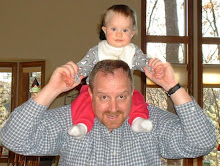I finally got off of my ass and went flying again. I'm glad I did. I'm on my last of 2 required elements (with an instructor). I began my simulated instrument training today. So far, all of my training has been centered around me seeing the big picture out of the front of the airplane.
Now with a view limiting device, all I can see is the instruments in front of me. I had to listen to the instructions that my instructor gave me as far as course, altitude and speed. Everything is coordinated by looking at the instruments. Each instrument can serve several purposes.
For instance, if you notice you are climbing, your airspeed will probably be coming down, the rate of climb indicator will be going up and the attitude indicator will show a climb. They are all related. If you are in a bank, the attitude indicator will show a bank, the turn coordinator will show a bank and your heading will be changing.
The object is to fly wings level, at a constant altitude and maintain course. This is easier said than done. The nature of flying is truly dynamic. The wind is constantly changing, the DG is constantly precessing (click here for an explanation of precession). In my case, the DG (directional gyro) was precessing a lot more than it should have. It made for a lot of extra work to constantly keep resetting it.
Once I finally got the hang of flying by instruments, I got to experience some unusual attitudes. Essentially, that is when the instructor puts the plane in an unusual climb or dive and hands it back over to you to get out of it, only using instruments. The main thing to look for is speed. Is it increasing or is it decreasing. If it is increasing, you are in a dive so you cut power and begin to pull up (not too fast or you will rip the wings off) and level your wings. If it is decreasing, you are in a climb, add full power and begin to push the nose over and level your wings.
By now, I am getting tired. It takes a lot of concentration to make minute corrections just by looking at the instruments when you are used to looking out of the window for that visual reference. So we did a GPS 17 approach back into McKinney. We got our squawk code and headed for our approach fixes. By the time I got to the outer marker, and descended to 1060 feet (the decision altitude for a GPS approach), off came the hood and I could see the runway. I made a small correction for the error in my tracking of the course, and landed (my first night landing). We did 2 more landings so I could be "night current". The problem with being night current is that according to our club rules, I can't fly at night unless it is with an instructor. According to the FAA, I can't carry passengers until I get my certificate. The only reason to stay night current is so that you can carry passengers at night. But I am "night current".
My E-Logbook
The video for this post is a DeHavelland Twin Otter on a short field landing then a short field take off. There is no way I would attempt that at my skill level.
Song Of The Day
8 years ago

No comments:
Post a Comment